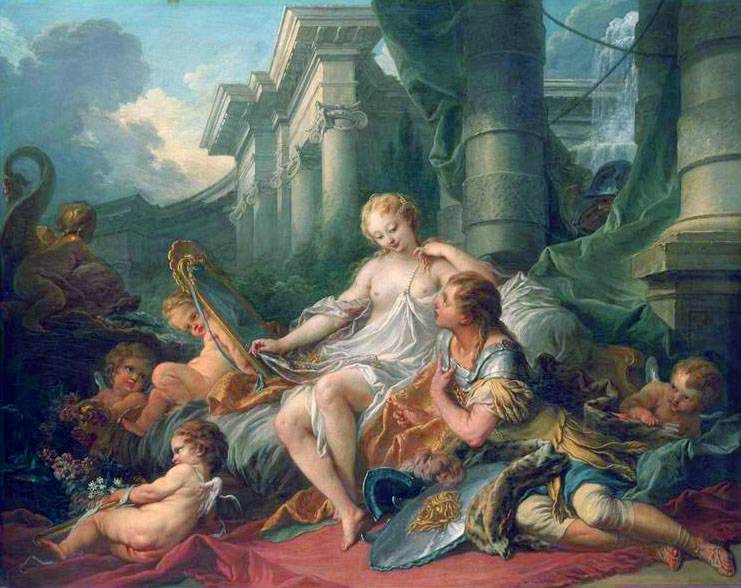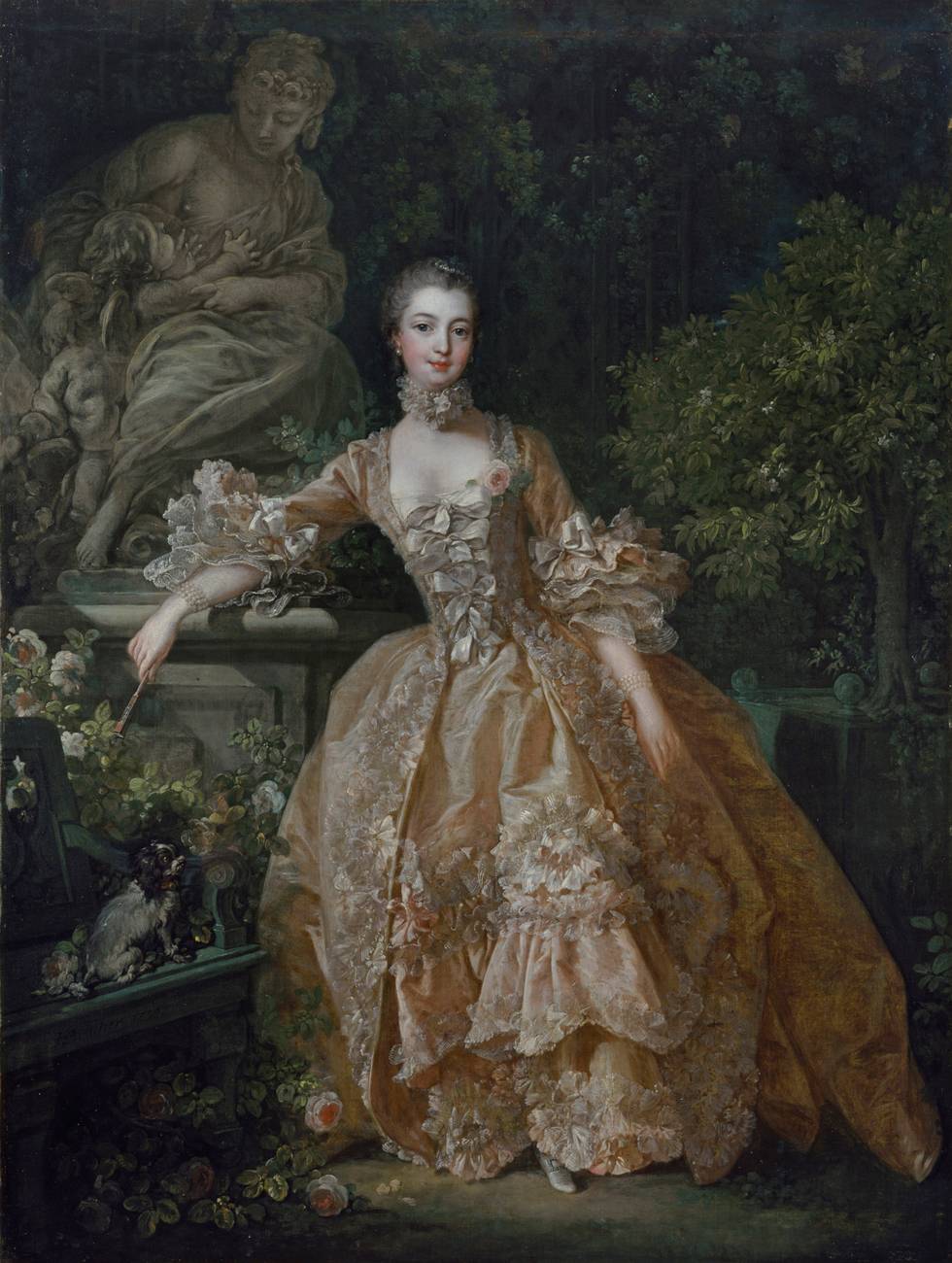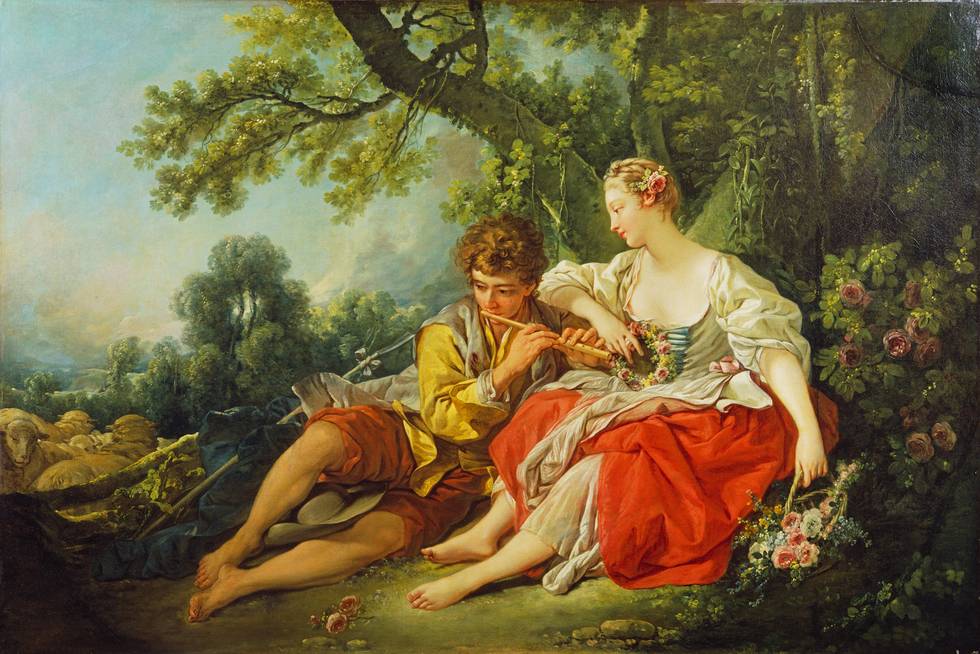François Boucher (1703-1770) was a master of the Rococo style, celebrated for his light-hearted, sensuous depictions of mythological and pastoral themes.
Born in Paris, Boucher's talent emerged early, leading to his training under the esteemed painter François Lemoyne (1688-1770). Boucher won the Grand Prix in 1723, but his trip to Italy was delayed. During this period, he learned printmaking while living with the engraver Jean François Cars (1661-1738).
Boucher then started producing etchings for Jean de Jullienne's Recueil Jullienne, a compilation of prints after the paintings of Antoine Watteau. This job provided Boucher with two significant benefits: it introduced him to Watteau's art, which would influence his work throughout his life, and it paid him enough to afford the trip to Rome where he remained for two years.

Boucher returned to France in 1731 and pursued a successful career within the Académie royale. He became a full member in 1734 with his painting Rinaldo and Armida and achieved the rank of full professor by 1737.
He worked for a wide range of clients, but under the patronage of Madame de Pompadour, the influential mistress of Louis XV, Boucher became the preeminent artist of his time. He produced various works, such as the portrait of Madame de Pompadour (1756), that adorned royal residences and captivated the French elite.
Boucher's art is synonymous with the Rococo's whimsical elegance, marked by soft, pastel hues, delicate brushwork, and playful compositions.
His subjects often included flirtatious goddesses, frolicking shepherdesses, and idyllic landscapes, all rendered with a luxurious sense of movement and grace. His pastoral scenes, such as Shepherd Piping to a Shepherdess (1747), further exemplify his ability to romanticise rural life.
In addition to his prolific output of paintings, Boucher was a skilled draughtsman and designer, contributing to tapestries, theatre designs, and decorative arts.
His role as director of the French Royal Academy further cemented his influence on the next generation of artists. Today, Boucher's work remains a cornerstone of 18th-century French art, embodying the exuberance of the Rococo era.


